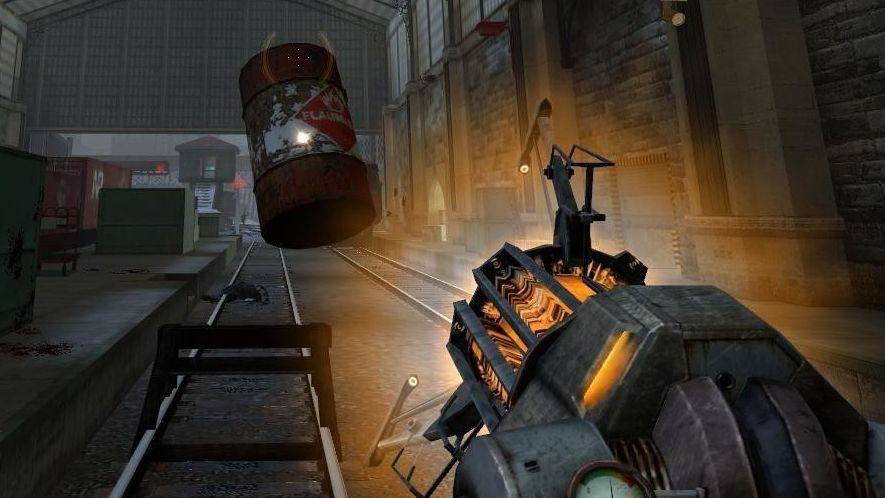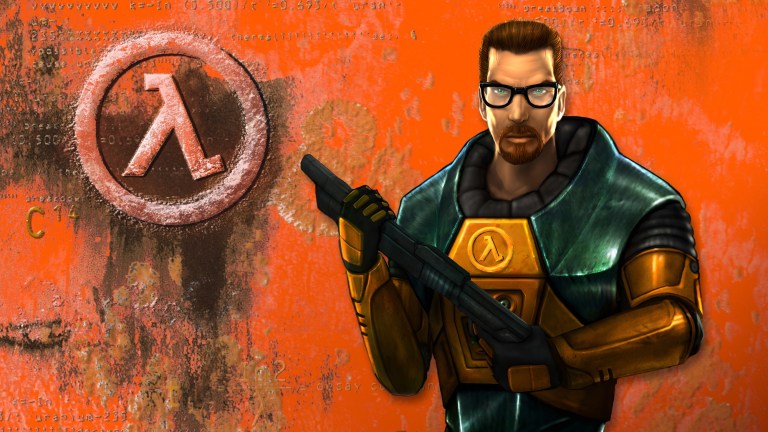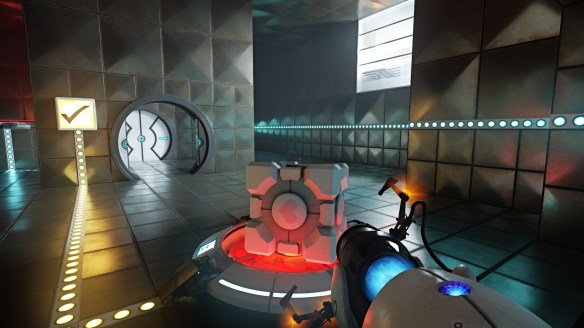Half-Life 2: Revolutionizing Physics Puzzles and Level Design As a game tester at Valve during the Half-Life 2 era (2004-2007), I witnessed firsthand the dawn of a new age in video game physics.

As a game tester at Valve during the Half-Life 2 era (2004-2007), I witnessed firsthand the dawn of a new age in video game physics. One memory sticks out like a sore thumb – or rather, a rapidly multiplying barrel. I was testing the canal section, and a seemingly innocuous physics interaction led to an exponential barrel duplication glitch that brought my test machine to its knees. Half-Life 2 was more than just a shooter; it was a groundbreaking experiment in physics-based interaction, and the Gravity Gun was at the heart of it all. It wasn't just a weapon; it was a key to solving Half-Life 2 physics puzzles.
The Physics Revolution
The early days of Half-Life 2 were a wild west of experimentation. We relied heavily on the Havok Physics engine, a powerful tool, but integrating it seamlessly into the Source engine presented a unique set of challenges. Creating realistic and reliable physics interactions, ensuring objects behaved as expected (most of the time), and optimizing performance were constant battles.
Early playtesting was crucial. I remember the infamous "combine ball" tests, where we would spawn hundreds of these spheres and simply watch them bounce and interact. These tests revealed limitations and opportunities, shaping the game's direction. Were the interactions reliable? Were they intuitive? Did the framerate dip to single digits? These were the questions we grappled with daily. It felt like we were constantly pushing the boundaries of what was possible, and sometimes, the boundaries pushed back.
Ravenholm's Playground
Ravenholm was a masterpiece of Gravity Gun level design. The entire section was crafted to teach and reinforce the mechanic in increasingly creative ways. Instead of simply handing you a weapon, the level became the weapon. The interconnectedness of the environment, the moody lighting, and the desolate atmosphere created a sense of dread that amplified the impact of every physics-based interaction.

I recall many late nights spent perfecting the physics-based traps in Ravenholm. Using spinning saw blades to clear entire hordes of zombies was incredibly satisfying. One memorable strategy involved carefully positioning propane tanks near a horde of zombies and then igniting them with a well-aimed shot. The chaos that ensued was both terrifying and hilarious.
But it wasn't just about explosions. Ravenholm exemplified using the environment in ways that FPS games had not achieved before. We designed scenarios where players could create traps using planks of wood, explosive barrels, and even the zombies themselves. You weren’t just shooting at the environment; you were using it. The innovative game physics made Ravenholm more than just a level; it was a sandbox of creative destruction.


Beyond Ravenholm
The Gravity Gun's utility didn't end in Ravenholm. In Nova Prospekt, it became a tool for both combat and puzzle-solving. The puzzles in Nova Prospekt often required manipulating heavy objects, redirecting energy flows, or even dismantling Combine technology. I remember one particular puzzle involving a generator that powered a door. The player had to use the Gravity Gun to carefully maneuver the generator into place while avoiding sparking wires and collapsing structures. The Half-Life 2 game design secrets were all about creating these moments of emergent problem-solving.

The gun’s combat potential was equally impactful. Ripping headcrabs off corpses to launch as biological weapons wasn't exactly elegant, but it was effective. We also designed scenarios where players could create barriers using explosive barrels or use debris to collapse structures on their enemies. In the Citadel, the upgraded Zero Point Energy Field Manipulator was essential for dismantling the Combine's technology and progressing through the level. There was something deeply satisfying about using the Combine's own tools against them. And sometimes, using the Gravity Gun just looked funny.

The Legacy
Half-Life 2's influence extends far beyond its own universe. Its innovative physics-based puzzles in FPS games paved the way for modern titles like Portal and Breath of the Wild. Portal's gels, which altered the properties of surfaces, and Breath of the Wild's rune abilities, which allowed players to manipulate objects with magnetism, are direct descendants of the Gravity Gun's core mechanic. The concept of manipulating the environment to solve puzzles and overcome obstacles became a cornerstone of modern game design. The Valve physics engine history is truly remarkable.

Conclusion
Half-Life 2 was more than just a game; it was a cultural phenomenon that redefined the possibilities of PC gaming. It was a privilege to be a part of its development, even if it meant spending countless hours chasing down barrel duplication glitches. It gave players a new and open world for Half-Life 2 emergent gameplay, and is still remembered fondly today. Will we ever see another physics engine as seamlessly integrated into a game's core mechanics as we saw in Half-Life 2?